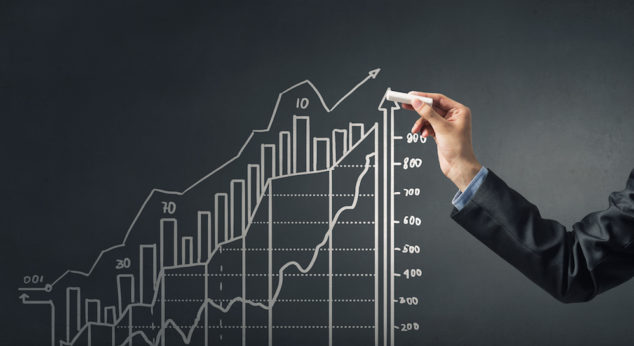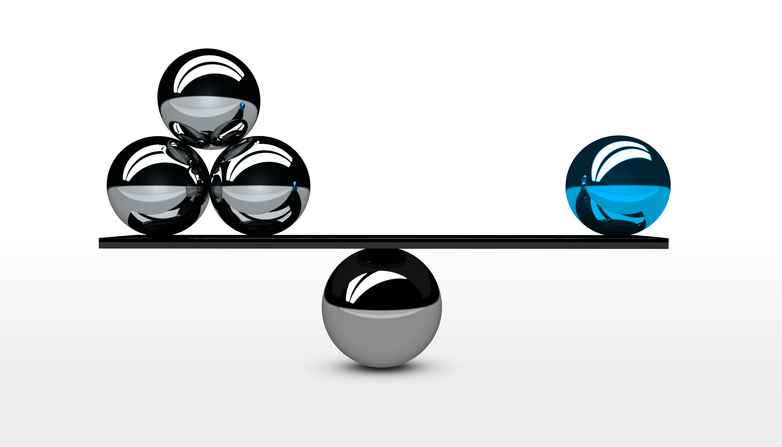The use of constant cash injections in the activities and functioning of the company in the form of capital investments is a mandatory element of ensuring any financial activity in the market. In order to introduce new technological solutions, revise existing technologies, and conquer new niches in the market, for a company is always a necessary element of finance and capital, investment.
The concept of capital
Under the concept of capital companies understand the amount of its financial resources, through which it is possible to carry out entrepreneurial, investment and financial activities of the company.
In the practice of the enterprise, capital is reflected in the liability balance in the form of equity and liabilities of the company to counterparties.
Capital is classified into several types:
- money capital;
- real capital.
Money capital takes into account the sum of all funds in the turnover of the company and participating in the production process. It is divided into its own and borrowed.
Under the real capital of the company understand the tangible capital, which represents a form of ownership, expressed in physical units. This includes fixed and working capital.
You can list a number of factors that have a certain impact on the choice of sources of financing for the company:
- the market in which the company operates;
- the size of the company and its lines of business;
- applied technologies in the production process;
- applicable tax system;
- government exposure;
- work with banks;
- company image.

Capital structure
The formation of the capital structure of the company is based on the features of its functioning in the market. The final performance of the company is very much dependent on the rationality of the capital structure. She is also able to influence the profitability and efficiency of funds, the liquidity of the company and its solvency, the level of risk.
The capital structure implies the ratio of all available sources of equity and borrowed capital. Simply put, this is the ratio of own and borrowed capital to each other.
Equity
To equity include all property that the company has in terms of a monetary indicator, for example, in rubles. This is a total assessment of the production potential of the company at the market price at the time of its acquisition, taking into account the amount of depreciation. As equity, we can understand the difference in the assets of the company in terms of money and existing liabilities.
The composition of capital is formed on the basis of certain sources. These include: charter capital, individual contributions of the founders, profit from the activities of the enterprise. Chief among them is the authorized capital.
Equity can be classified into invested and accumulated profits. The first of them is the total amount of funds that was obtained by making investments in the development and formation of the company. This includes authorized and additional capital, as well as reserves.
Under the accumulated profit understand the full amount of profit that was earned by the company for the periods (past and current). Taxes and dividends must be deducted from the profit.

Borrowed capital
Borrowed capital of the enterprise are certain funds raised by the enterprise, which were directed to the functioning of the company or to its specific goals.These funds can be taken for a certain period and on certain conditions. These funds include loans and borrowings, financial assistance provided by other companies or the state, the amount of collateral and other sources of funds provided on the basis of any guarantee of return.
Borrowed capital is classified into long-term and short-term. Long-term liabilities of the company are associated with a period of more than 1 year. Short-term - up to 1 year.
Comparison of equity and borrowed capital
When comparing the two types of capital, we can draw conclusions on the main differences:
- equity gives the right to participate in the activities of the company, and borrowed excludes such a right;
- a change in the share of one of the types of capital in the overall structure affects the financial stability of the company. Thus, an increase in the share of loans entails an increase in the company's debt and reduces its stability. This ratio is manifested by calculating the coefficient of the structural relationship between borrowed and own capital according to the formula, which will be discussed later;
- in the event of bankruptcy, borrowed capital has the primary right to receive funds;
- the owner’s income in the situation of borrowed capital does not depend on the dynamics of the firm’s profit, and the owner’s income from equity, on the contrary, depends.
Borrowed capital is recognized as a “cheaper” source of financing, which is why it is widely used in the practice of companies. However, a high proportion of such capital in the structure reduces the financial stability of the company, which may lead to bankruptcy. An optimal balance between loans and equity is needed.
The structure of equity and borrowed capital can be estimated through the calculation of ratios. These indicators include:
- equity ratio;
- coefficient of financial independence;
- the ratio of equity to borrowed capital shows the ratio between structural shares.

Equity concentration
The first coefficient is calculated by the formula:
TOksk = Kwith / K * 100%,
where kwith - equity, t.
To - the total capital of the company, i.e.
In the framework of this indicator, the share of equity in the structure is determined. The ratio of this ratio is 60%, which means that the share of equity should be at least 60%.
Financial independence
The second coefficient is calculated by the formula:
TOfnl= SC / A = p. 1300 / p. 1700,
where SK is equity, i.e.
And - the assets of the company, i.e.
We can talk about the duality of the nature of this indicator:
- on the one hand, an increase in this ratio leads to an increase in the financial independence of the company with an increase in equity;
- on the other hand, an increase in the coefficient leads to a decrease in return on equity.

The financial independence ratio of an enterprise shows the share of the company's assets that may be covered by the company's own capital. The remaining share is covered by borrowed funds. The growth dynamics of this indicator is considered positive, which means an increase in the likelihood of paying off debts by the company at its own expense. This situation means increased financial independence.
The normative value of this coefficient exceeds 0.5. A high value indicates the presence of the state of the company, in which it can cover all its obligations with the necessary funds independently, that is, without creditors. This situation also indicates the independence of the company from creditors.
If the coefficient is close to 1, then this means that the enterprise is developing at a slow pace, there are restraining mechanisms. If the company is trying to abandon the funds raised, then it loses the possibility of additional profit growth and income through the expansion of production.
The ratio of shares in the capital structure
The last ratio of equity to borrowed capital is the most significant in the calculations. It is defined as follows:
TOwith = Kwith / Ks = p. 1300 / (p. 1500 + p. 1400),
where ks - borrowed capital, t.
TOwith - equity, i.e.
The indicator reflects the availability of equity in comparison with borrowed funds. Otherwise, it can be called financial leverage (leverage). This ratio is very important in financial calculations and evaluating the financial activities of the company. The ratio of borrowed and equity capital and the formula for calculating it characterize the degree of risk of the company, its stability and profitability.
Financial leverage appears when the company begins to attract borrowed funds in the absence of its own to conduct business and expand the business. The calculation of this indicator allows the company to determine the point that should not be crossed when using the funds of creditors, so as not to become financially dependent on them and not to go bankrupt.
Borrowed funds are not always negative, on the contrary, they make a profit in the proper amount, since they make it possible to finance the increase in volumes of the company and the expansion of its activities, and the receipt of additional profit based on changes. The financial stability of the company depends on the size of borrowed funds. Since when it is significantly exceeded, the company falls into bondage depending on creditors, and this is the path to bankruptcy.

Options for using the ratio of equity to borrowed capital:
- a positive coefficient at which the profit from loans is higher than the payment for them;
- a neutral coefficient at which the profit from loans is equal to the payment for them;
- negative coefficient at which the fee for the content of loans is higher than the income from them.
The latter option is negative for the enterprise and requires optimization of the capital structure.
Structure Optimization Issues
With the optimal capital structure of the company, such a ratio of its parts is observed that it is possible to ensure a rational combination between the coefficient of financial profitability and financial stability of the company. In this situation, the maximum value of the company in the market is achieved. The optimization process ensures the adaptation of the company to new environmental conditions with a view to its survival.

It is rather difficult to provide clear instructions to the company on how to optimize capital, since there is no universal recipe due to the impact of a number of factors on the company. It is possible to formulate optimization criteria in the form of postulates:
- a sufficient level of profitability and risk of the company;
- decrease in WACC (weighted average cost of capital);
- company value growth in the market.
The basic principles of optimization are the following:
- the financing structure is consistent with the overall strategy of the company
- increase in company value due to financial leverage;
- debt growth makes sense in the event of restrictions on company investment.

Conclusion
The ratio of own and borrowed capital is very significant in the financial calculations of the company, since it allows you to understand the proportion that make up the company's own and borrowed funds. His knowledge is necessary for investors, bankers, lenders and business owners.
